Bridget Riley Out There 2004 Oil on linen. 130 x 390 cm (51 1/5 x 153 1/2 in). Signed and dated ‘Bridget Riley 04’ on the reverse.
Provenance Pace Wildenstein, New York Exhibited Bloomfield Hills, Michigan, Cranbrook Academy of Art Museum, Bridget Riley Paintings and Works on Paper 1963-2005, 2005; New York, PaceWildenstein, Bridget Riley Recent Paintings and Gouaches, 2008 Catalogue Essay “The colours are organised on the canvas so that the eye can travel over the surface in a way parallel to the way it moves over nature. It should feel caressed and soothed, experience frictions and ruptures, glide and drift. Vision can be arrested, tripped up or pulled back in order to float free again … One moment there will be nothing to look at and the next second the canvas suddenly seems to refill, to be crowded with visual events.” (Bridget Riley quoted in Bridget Riley exh. cat., Tate Modern, 2003) One of the most monumental of Bridget Riley’s recent curve paintings, Out There represents the height of the British artist’s search for a virtual space defined entirely in terms of form and colour. In 1997 Riley dropped the lozenge motif which had preoccupied her work since the mid-1980s in order to explore the behaviour and intensity of light. Allowing an unprecedented flow of energy, the new curve paintings, in contrast to the waves and ripples of the 1970s, are formed by the repetition of simple organic shapes blocked out with large areas of colour. In Out There, Riley’s characteristic underlying structure is further enhanced by sinuous, winding curves which dance freely and discursively. Only five different colours are used over an impressively wide expanse of canvas, drawing the eye across an animated, shimmering, chromatic field. Bridget Riley is one of the most innovative painters to emerge post- World War II, and her devotion to abstraction has been unwavering for over half a century. Along with Agnes Martin no other artist, male or female, has done more over this period of time to infuse minimalist, non-figurative painting with a sense of the personal, the poetic, the spiritual. While Riley’s first Op art works were much more hard-edged, involving only black and white, her recent canvases are fluid and lyrical, exploring shapes and forms defined by colour contrast rather than line. Reminiscent of the dynamic, undulating curves of Art Nouveau, Riley’s seemingly superimposed planes and interweaving fields of shaped colour synthesize to create an impression of organic movement that has been distilled to its pure, disembodied essence. Upon viewing the dancing play and movement of light in Out There, one can not help but think of Henri Matisse’s Fauvist masterpiece La Danse. Executed, like Out There, in a very limited number of colours, La Danse depicts a rhythmical succession of monochromatic dancing nudes set against a two-toned background of land and sky. Indeed, Riley’s new curve paintings can be seen as a continuation, reaffirmation and evolution of Matisse’s own late work, such as his famed paper cutout The Snail, which defines its subject by shape and colour. Though more abstract, Riley, like Matisse, reveals features which we recognise from certain experiences in nature. As Riley has said, “for me, nature is not landscape but the dynamism of visual forces – an event rather than an appearance. These forces can only be tackled by treating colour and form as ultimate identities” (Bridget Riley ‘Working with Nature’, in R. Kudielka, ed., The Eye’s Mind: Bridget Riley Collected Writings 1965–2009, London, 2009, p. 88). Read More
Bridget Riley Out There 2004 Oil on linen. 130 x 390 cm (51 1/5 x 153 1/2 in). Signed and dated ‘Bridget Riley 04’ on the reverse.
Provenance Pace Wildenstein, New York Exhibited Bloomfield Hills, Michigan, Cranbrook Academy of Art Museum, Bridget Riley Paintings and Works on Paper 1963-2005, 2005; New York, PaceWildenstein, Bridget Riley Recent Paintings and Gouaches, 2008 Catalogue Essay “The colours are organised on the canvas so that the eye can travel over the surface in a way parallel to the way it moves over nature. It should feel caressed and soothed, experience frictions and ruptures, glide and drift. Vision can be arrested, tripped up or pulled back in order to float free again … One moment there will be nothing to look at and the next second the canvas suddenly seems to refill, to be crowded with visual events.” (Bridget Riley quoted in Bridget Riley exh. cat., Tate Modern, 2003) One of the most monumental of Bridget Riley’s recent curve paintings, Out There represents the height of the British artist’s search for a virtual space defined entirely in terms of form and colour. In 1997 Riley dropped the lozenge motif which had preoccupied her work since the mid-1980s in order to explore the behaviour and intensity of light. Allowing an unprecedented flow of energy, the new curve paintings, in contrast to the waves and ripples of the 1970s, are formed by the repetition of simple organic shapes blocked out with large areas of colour. In Out There, Riley’s characteristic underlying structure is further enhanced by sinuous, winding curves which dance freely and discursively. Only five different colours are used over an impressively wide expanse of canvas, drawing the eye across an animated, shimmering, chromatic field. Bridget Riley is one of the most innovative painters to emerge post- World War II, and her devotion to abstraction has been unwavering for over half a century. Along with Agnes Martin no other artist, male or female, has done more over this period of time to infuse minimalist, non-figurative painting with a sense of the personal, the poetic, the spiritual. While Riley’s first Op art works were much more hard-edged, involving only black and white, her recent canvases are fluid and lyrical, exploring shapes and forms defined by colour contrast rather than line. Reminiscent of the dynamic, undulating curves of Art Nouveau, Riley’s seemingly superimposed planes and interweaving fields of shaped colour synthesize to create an impression of organic movement that has been distilled to its pure, disembodied essence. Upon viewing the dancing play and movement of light in Out There, one can not help but think of Henri Matisse’s Fauvist masterpiece La Danse. Executed, like Out There, in a very limited number of colours, La Danse depicts a rhythmical succession of monochromatic dancing nudes set against a two-toned background of land and sky. Indeed, Riley’s new curve paintings can be seen as a continuation, reaffirmation and evolution of Matisse’s own late work, such as his famed paper cutout The Snail, which defines its subject by shape and colour. Though more abstract, Riley, like Matisse, reveals features which we recognise from certain experiences in nature. As Riley has said, “for me, nature is not landscape but the dynamism of visual forces – an event rather than an appearance. These forces can only be tackled by treating colour and form as ultimate identities” (Bridget Riley ‘Working with Nature’, in R. Kudielka, ed., The Eye’s Mind: Bridget Riley Collected Writings 1965–2009, London, 2009, p. 88). Read More
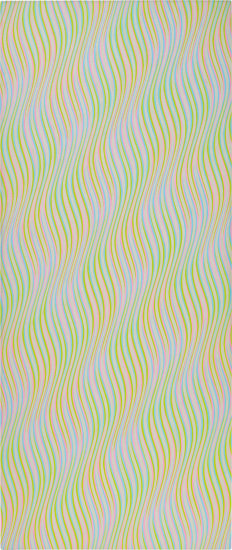
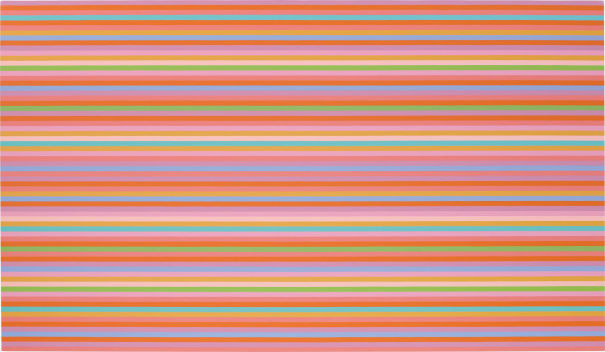
.jpg)
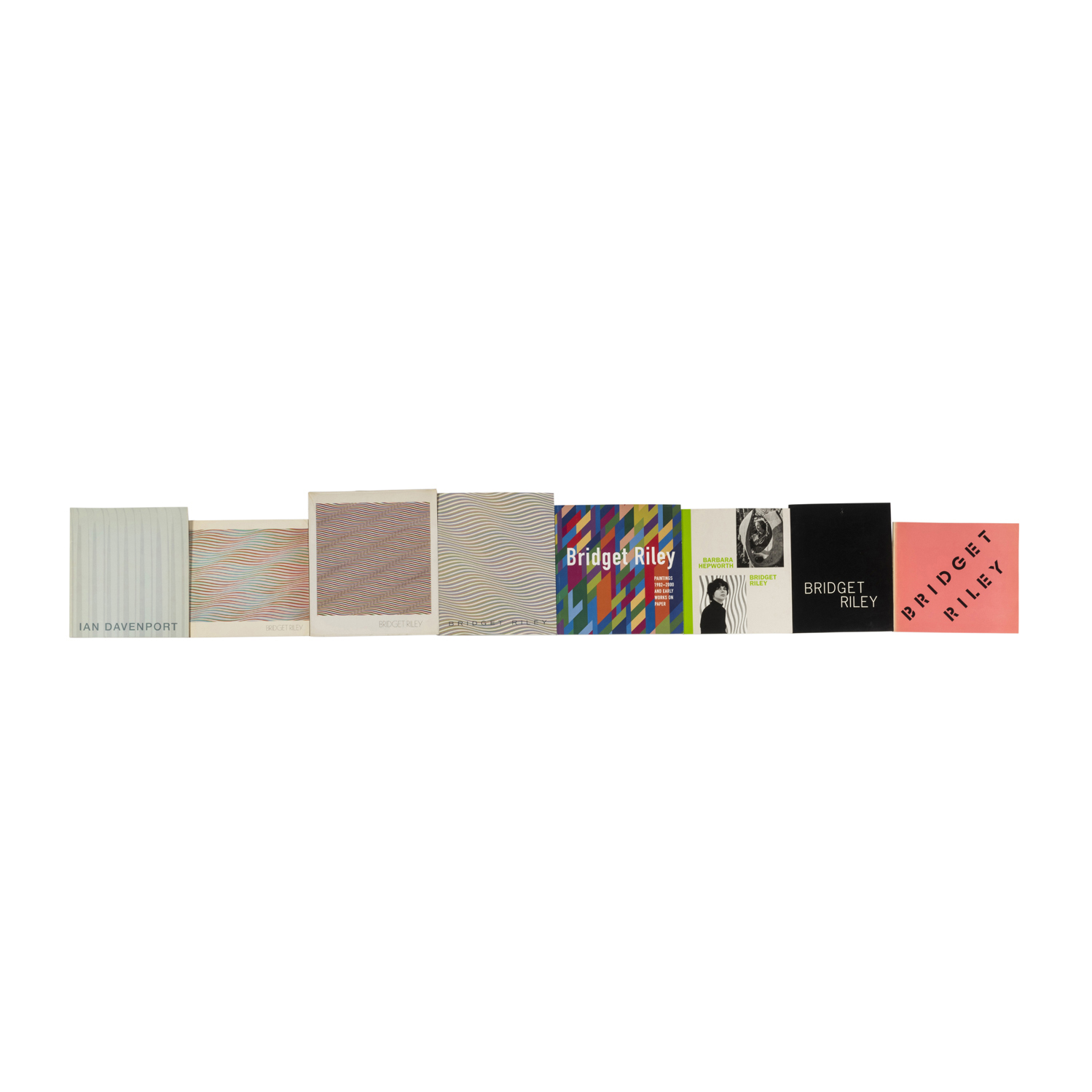
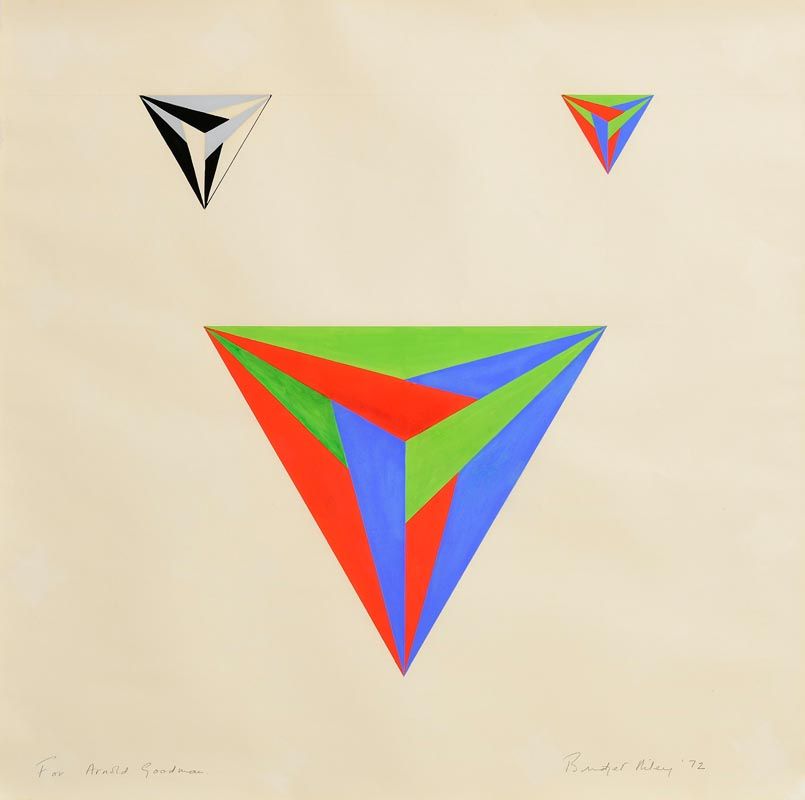
.jpg)
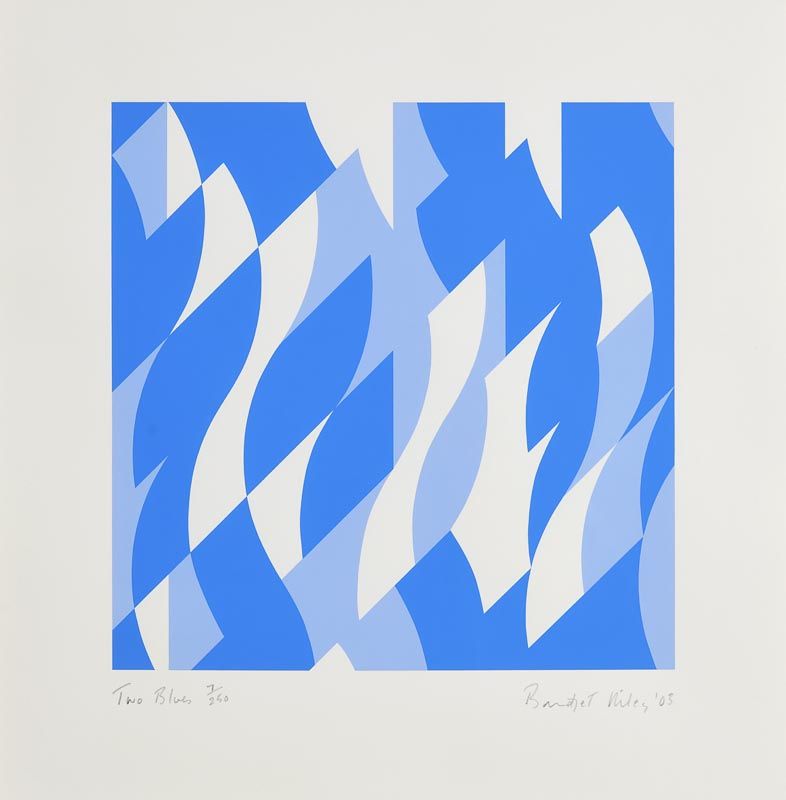
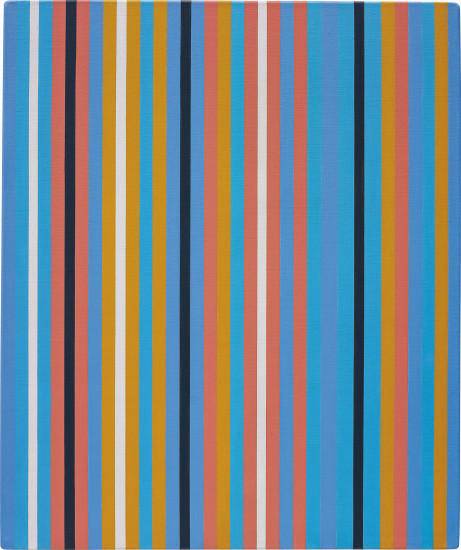
.jpg)
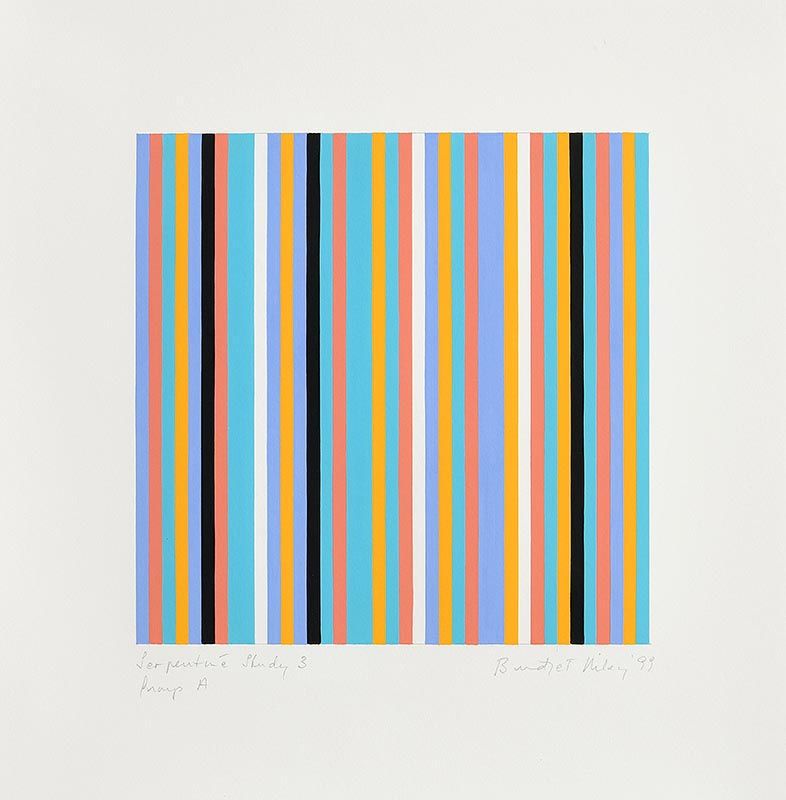
.jpg)
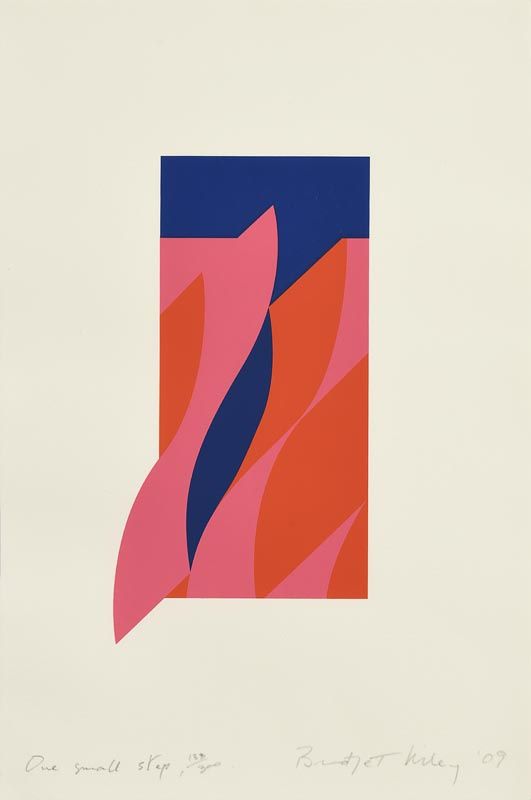

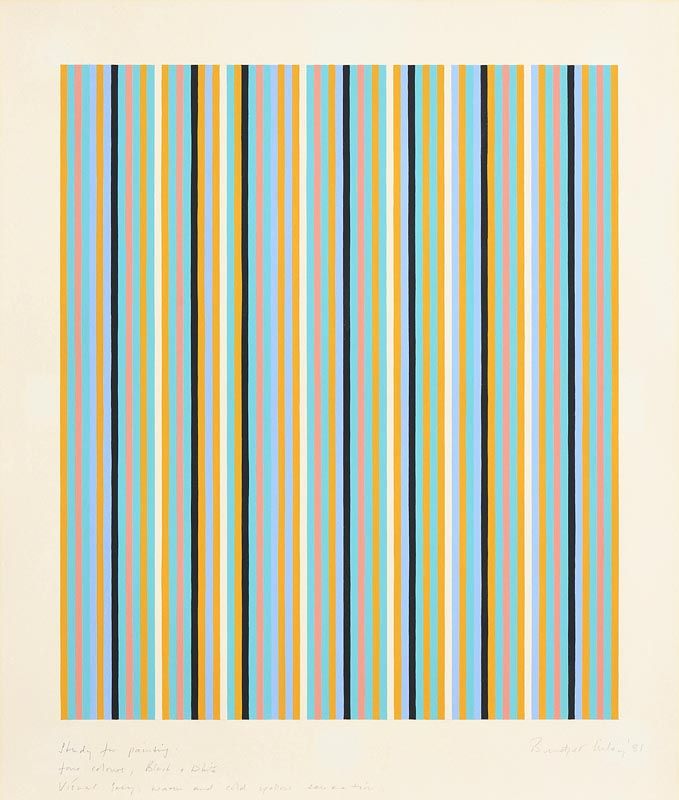
Testen Sie LotSearch und seine Premium-Features 7 Tage - ohne Kosten!
Lassen Sie sich automatisch über neue Objekte in kommenden Auktionen benachrichtigen.
Suchauftrag anlegen